15 June 2021
Five Objects connecting Shakespeare and the Royal Family
Objects in the Royal Collection reveal new stories about English Royal history
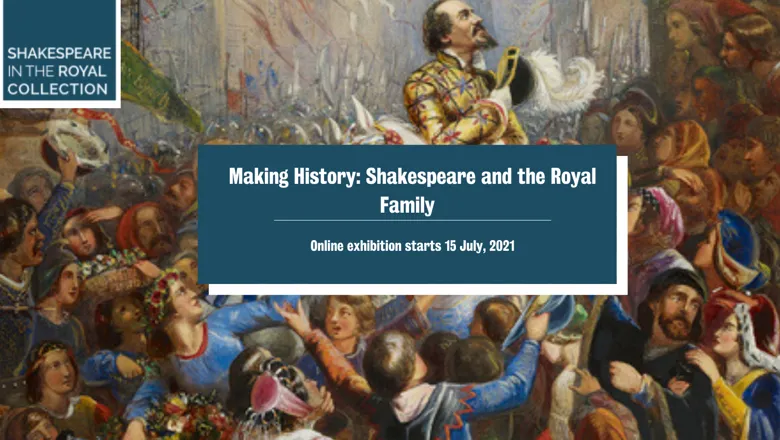
Shakespeare in the Royal Collection is a three-year AHRC-funded research project exploring the relationship between Shakespeare and the royal family in the centuries since Shakespeare’s death. A team of researchers have created an online database containing all the Shakespeare-related items in the Royal Collection (including paintings, books, drawings, prints, letters, essays, decorative objects, furniture and photographs), which anyone can explore. Many of these objects have interesting stories to tell. We have selected five objects that reveal the historical and occasionally tragic connections between Shakespeare and the royal family.
A Treatise on Herne’s Oak
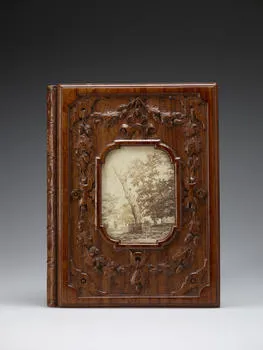
The comedy The Merry Wives of Windsor portrays two married women fending off the sexual advances of the old knight, Sir John Falstaff, in a series of practical jokes. Their final trick takes place under an oak tree haunted by the figure of ‘Herne the Hunter.’ Shakespeare may have picked up ‘Herne’s Oak’ from local folklore, or invented it. Since the play was first performed, several different trees in Windsor Park have been mooted as ‘the real Herne’s Oak.’ When one of these was blown down in 1863, Queen Victoria commissioned various objects to be carved from its wood, including this Treatise on the identity of Herne’s Oak. The treatise is a small book bound in polished wood with a photograph of the old tree, shortly before its fall, inset into the front cover. This story proves the popularity of the legend of Shakespeare’s Herne’s Oak and how this has continued through history.
Mary Robinson as ‘Perdita’
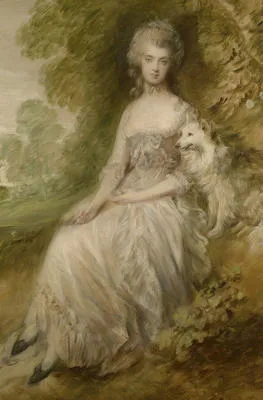
A portrait of the actress Mary Robinson by Thomas Gainsborough, in a pastoral scene reminiscent of the ‘Perdita’ scenes from Shakespeare’s The Winter’s Tale, is one of the key objects in the exhibition. The portrait is linked to the story of George IV who, as a young prince, pursued an affair with Robinson. They met after he saw her play the ‘lost princess’ Perdita in a play adapted from The Winter’s Tale. The affair was compared to that of Shakespeare’s lovers in the play, since the prince in The Winter’s Tale, Florizel, believes that he is courting a commoner. George IV is also known to have signed himself as Florizel during this period. The name ‘Perdita’ haunted Robinson for the rest of her career—long after she had retired from the stage and had been cast aside by the Prince. She later became partially paralysed, probably as a result of a miscarriage, and in later life she was known for her Romantic poetry and proto-feminist pamphlets.
Much Ado About Nothing Tapestry
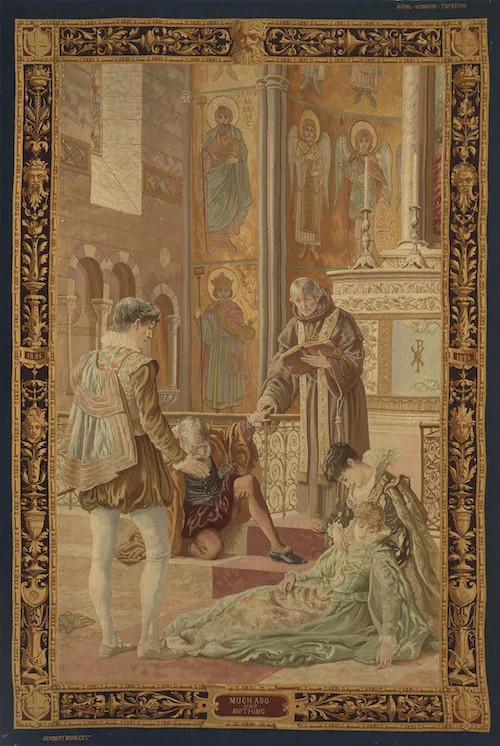
A tapestry portraying a wedding scene from Shakespeare’s comedy Much Ado About Nothing, which has been artificially browned and faded to make it resemble the Royal Collection’s own antique tapestries at the Tudor palace of Hampton Court. This was in line with the late Victorian fashion for art and furnishings in mock-medieval styles. This tapestry, created in 1886, was given to Queen Victoria in lieu of repayment for a debt, after the tapestry works at Windsor (one of only two in the UK at the time) closed due to financial insolvency. It shows the disrupted wedding from Much Ado About Nothing, when the bride, Hero, is falsely accused of adultery and abandoned at the altar by her would-be husband, Claudio.
Queen Victoria’s Theatrical Album
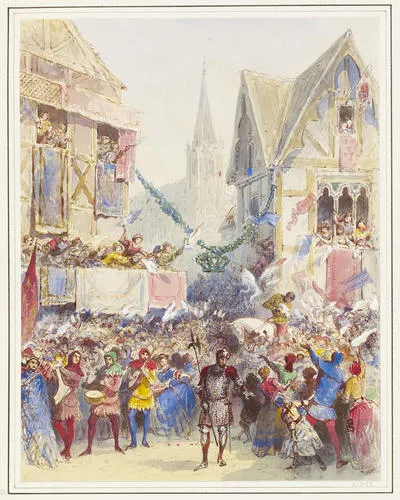
Queen Victoria frequently commissioned watercolour paintings representing plays she had seen in London theatres. She and her husband, Albert, gathered these paintings in their ‘Theatrical Album’—a collection of personal memories created with the aid of the couple’s favourite watercolourists. This is a watercolour of a scene from a production of Richard II, commissioned from the Swedish artist Egron Sellif Lundgren by Queen Victoria in 1857. As well as Shakespearean plays, they collected watercolours of scenes from operas and contemporary melodramas. The mix of performances shows that the royal couple understood Shakespeare as part of a wider landscape of Victorian theatrical entertainments.
‘The Harry the Fifth Club, or, the Gang’
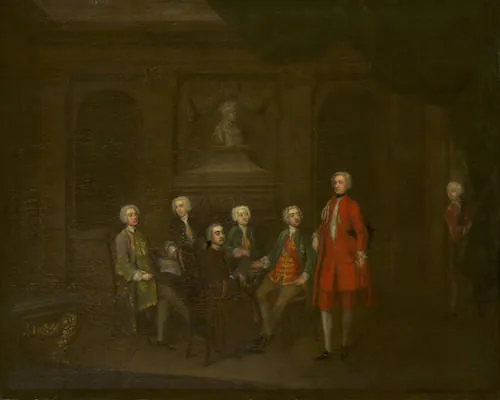
A group portrait of the son of George II, Frederick Prince of Wales, and his friends. A bust of the Henry V hangs over the fireplace and, when the painting entered the Royal Collection, George IV’s steward noted that each figure in the painting was meant to represent a character from Shakespeare’s Henry IV part 1—with Frederick himself as Prince Hal, peering in from the doorway.
The reference to Shakespeare’s history play connects Frederick and his ‘gang’ with the heavy-drinking friends of Prince Hal, who are ultimately rejected by the prince when he becomes king. The painting was given to a later Prince of Wales, George IV (Frederick’s grandson), who was also associated with Shakespeare’s Prince Hal in satirical prints and pamphlets.
The project will host a free to view online exhibition, ‘Making History: Shakespeare and the Royal Family’, launching on 15 July 2021, which will showcase these objects and more from the Royal Collection. The exhibition will also display 3D interactive models of performance spaces for Shakespearean plays at Windsor Castle. Follow Shakespeare in The Royal Collection on Twitter for updates.
